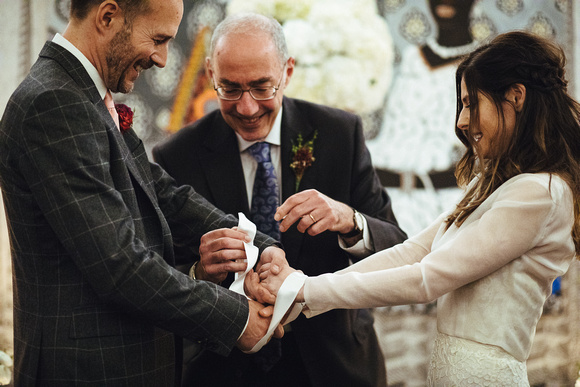
by Michael | Oct 9, 2018 | Blog
Clearly, a lot of people really don’t know what a handfasting is. A few words of explanation shouldn’t go amiss, then.
A handfasting forms a central part in pagan ceremonies, but is often chosen as a colourful “extra” in a more traditional wedding. In that case, it may only last a minute or so.
Brief it might be, but it is something well worth considering.
History
Handfastings originated in Celtic times, but began as a marriage rite in the Middle Ages. When peasants married, they were often unable to afford a clergyman’s fee to hear their vows or to buy a ring to signify their love. The ritual of handfasting became a popular alternative.
A cord was wrapped round the wrists of the couple and left on them until their union was consummated. It would usually be kept afterwards as a tangible reminder and proof of their commitment and love.
This ceremony has, of course, given us the expression “tying the knot”.
Present-day Ceremony
Nowadays, the cord symbolises the pair’s mutual love. The way a handfasting can be slipped in to a traditional-type wedding is as follows, although this is only a suggestion, and it will be different for a full pagan ceremony.
This could be the order of service:
- Bride walking down the aisle with her father
- Officiant welcome
- Address about the meaning of love (possibly from a religious slant, if that’s wanted)
- Optionally, the couple’s ‘story’
- Here, or after the Handfasting, or at both times, a song or a reading/poem
- Handfasting
- Possibly, a Unity Candle, Sand Ceremony or Chalice ritual
- Exchange of Rings/Vows
- Jumping the Broom (not actually pagan, but deriving from wedding ceremonies conducted by slaves in the American South), now used to symbolise sweeping in the new as the new home is created
- Concluding words
Thoughts
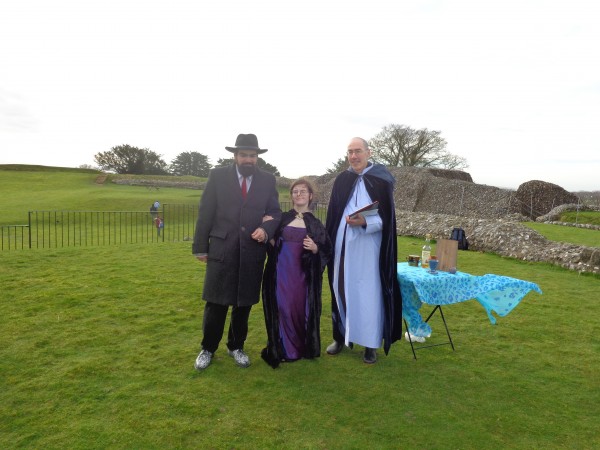
As a celebrant, perhaps my favourite handfasting was part-pagan, part-Jewish containing rituals from both sides. Of course, I explained the symbolism for those unfamiliar with the other’s practices, so everyone could understand. For example, the bride walked round the groom seven times while the groom recited his wife’s virtues (Jewish tradition), before we did the pagan handfasting.
This worked really well and helped create a warm atmosphere. It was a totally unique occasion – absolutely perfect for the couple and – clearly – for the guests too.
It’s something your civil celebrant will be able to advise you about.
If you want to add extra sparkle and personality to your big day, you could do a lot worse than try a handfasting.
Featured image: courtesy of www.lyndseygoddard.com
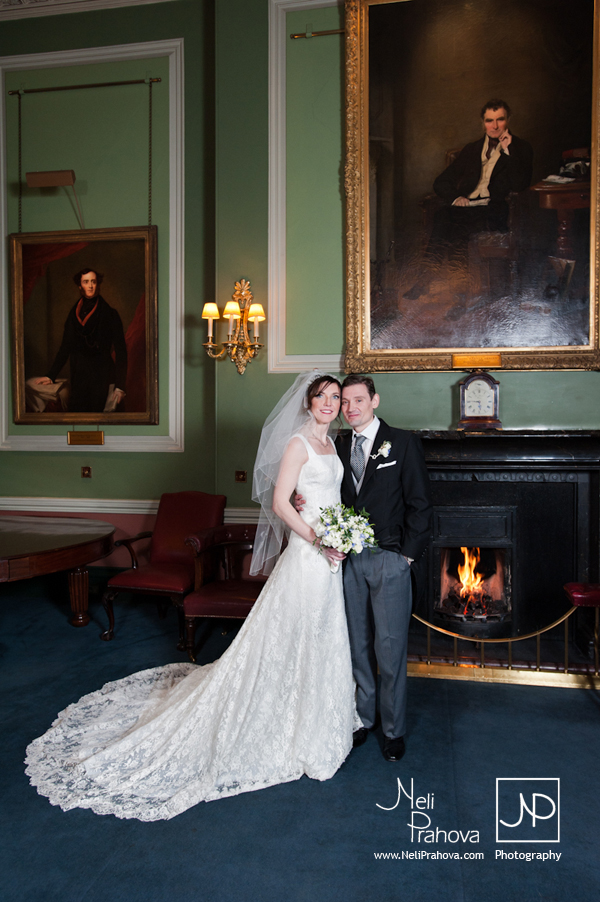
by Michael | Jan 6, 2016 | Blog
As a celebrant, most of the ceremonies I conduct are reasonably conventional (although all are unique – specific to the couples or individuals concerned, because I specialise in tailor-made ceremonies).
Every so often I get asked for something a bit more way out.
Of course, “way out” means one thing to some people and something quite different to others. So perhaps it would be easier if I defined what I had in mind by the term “conventional”.
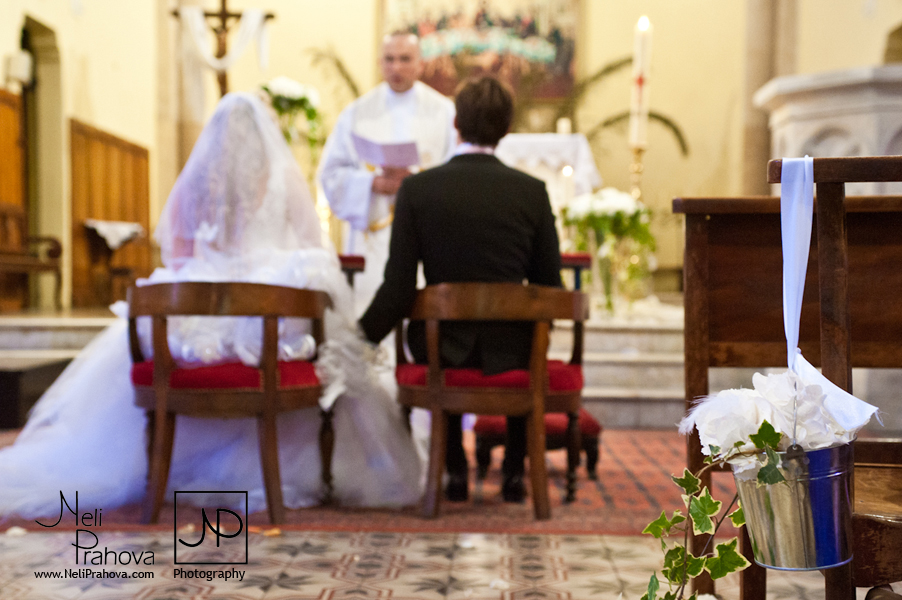
Conventional
A “conventional” wedding will contain most, if not all, of the following:
- an introduction or welcome;
- readings, sometimes delivered by friends or family – these can be prose or poetry, and can be chosen specially by the couple or suggested by the celebrant;
- music – this is unlikely to be “traditional” – although there’s nothing to stop people throwing in a hymn or the like. It may well reflect the couple’s personal preferences or a significant moment in their relationship;
- the vows – these may be written by the couple (with or without celebrant input) or simply suggested by the celebrant. They may be memorised or (more advisable!) read from a card or repeated after the celebrant;
- a ring blessing;
- a celebrant address – this may be something on the importance of marriage combined with the couple’s ‘story’ ;
- maybe, a ritual or two – for example, lighting a unity candle.
Such weddings may feature the bride in white; several, many or no religious elements; and a variety of choices of music and texts.
Venues can be just as varied, of course. Provided the legal part of the wedding has taken place (ie before registrars), imagination or budget would seem to be the main limitations as to where you hold the ceremony.
More ‘way out’
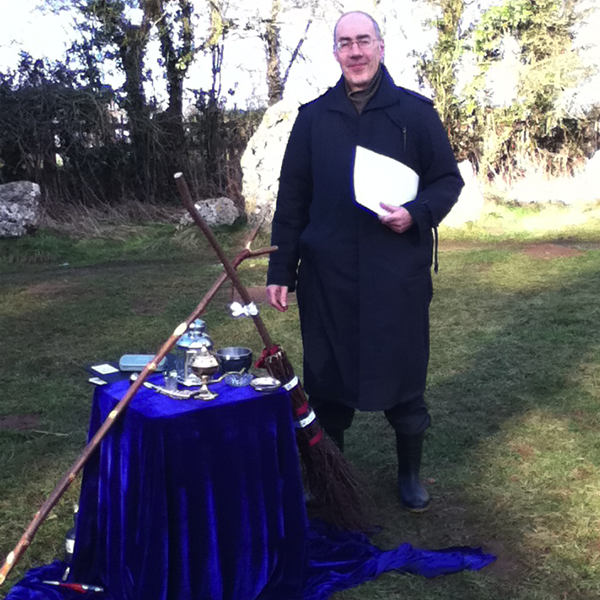
However, I am occasionally asked to do a couple of less middle-of-the-road ceremonies. One was a naturist wedding (I’m afraid, I have no photographs!) and another, a pagan wedding with a difference.
This wasn’t an ‘ordinary’ pagan wedding – if any can be thus termed – as the pagan was marrying a (half!) Jew, so elements from both cultures had to be combined (and explained to guests).
It was a handfasting ceremony, so that also set this apart.
The venue was certainly striking, as we were on top of Old Sarum, near Salisbury. This was of particular significance, because this iron age fort is very exposed, as the photo above shows, and the chances of a dry wedding were very poor. However, whether it was due to the combination of cultures, or mere coincidence, the sun actually shone (briefly) on the ceremony, and we were all able to enjoy the most wonderful experience.
Be bold!
So you have choices. Weigh them up and decide wisely. Bear in mind that a personalised wedding can be so special. Do give it consideration!





